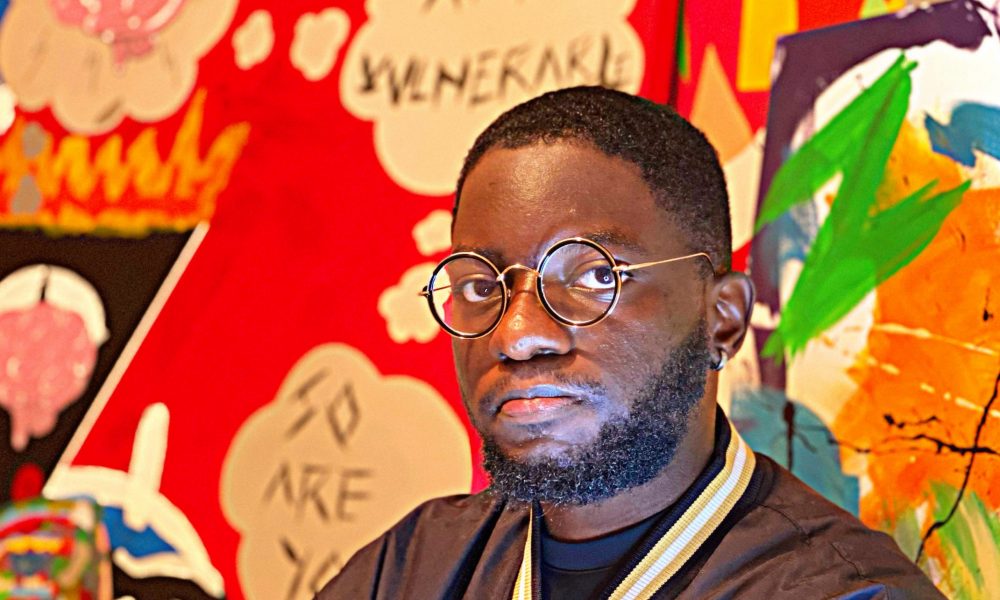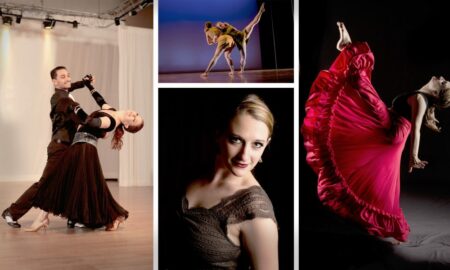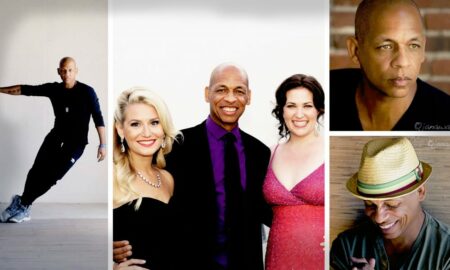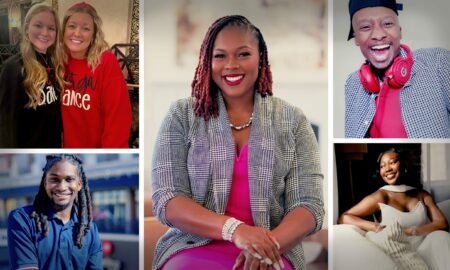

Today we’d like to introduce you to Les Artisans Du Champ.
Hi Les, can you start by introducing yourself? We’d love to learn more about how you got to where you are today?
I was born in Cameroon, a coastal country in West Africa. In 2016, after living in various countries around the world, I moved to the USA with my family with plans to work as an artist. In addition to painting, I am a writer, actor and photographer as well though I often consider myself nothing more than a storyteller. Since 2016, I have explored various ideas with my work including form, color, geometry, race and social justice, and recently, I expanded my portfolio to involve portraiture done in a unique manner with elements lifted directly from my Cameroonian culture. My name, “Les Artisans du Champ” translates from French to “The Craftsmen of the Field,” a moniker culled from my grandparents who were literally artisans of the field. People often think I am influenced by Marcel Duchamp, but I did not even know who he was when I decided “Les Artisans Du Champ” was what I wanted to be known as. The first artist I knew was my grandmother, whom I studied and admired vigorously. Grandfather was also very adept at painting and crafting wicker furniture so I grew up surrounded by creative people who made a living by implementing their vision and ideas in the material world.
We all face challenges, but looking back would you describe it as a relatively smooth road?
Race has been my biggest obstacle; but not in the way one would expect, Growing up in Cameroon, there was no talk about white or black. In fact, no one had never even called me, “a black man” till I arrived the USA which is why the intensity with which conversations of race and diversity took place in my new home came as a severe culture shock to me. As a black artist, the American audience began to cloak me and my work with certain expectations which – in addition to the difficulties of finding solid footing in a foreign land – were additionally oppressive. I had people tell me that there was “nothing black about my work” because I focused primarily on abstraction, as if talking about social justice and race-related topics are the only conversations a black artist is savvy enough to partake in. Furthermore, my family never expected me to turn to a career in art as I had always done impressively well at school, so navigating those tricky waters and having those conversations with my family were daunting tasks.
Alright, so let’s switch gears a bit and talk business. What should we know about your work?
With all the turmoil and strife going on in the world, I try to avoid anything dark or depressive in my work as much as possible. My abstractions are centered around spreading cheer, joy and positivity – which almost seems counterintuitive given that artists usually get more attention when they strike social justice issues at the heart. I really do feel it very important to talk about the things I talk about, especially as there aren’t many people who look like me choosing to talk about these things. So I use lots of bright colors in my work. My brother calls it “The Rainbow Porridge”. Another peculiar thing about me is my stark refusal to specialize in any one type of painting. If a story can be best told by a portrait instead of a spontaneous burst of colorful motion, then I’ll paint a portrait. I don’t do well with labels, in relation to my work, because I’ve always felt that restricting myself to only one type of creative outlets is like asking a PhD student to type a dissertation using only half the keyboard. I’ve done multiple portraits in addition to my abstractions, and it is a process I wholly enjoy. It’s exciting and meaningful to explore these processes simultaneously. I use a lot of collage in my paintings; I employ newspapers, texts, poems and other forms of the written word when I paint because I personally believe that the words we use have as much power as the art we create. In a sense, these words are even an artform in their own rite. I also utilize gold, cowrie shells and wooden beads in the portraits I make because these serve as a recollection of who I am, where I come from and the traditions of my people which have shaped the artist I am today.
What matters most to you? Why?
Telling the truth, is perhaps the most important venture I have ever decided to undertake. As an artist, I believe I have a tremendous responsibility to speak truth to power, because when all other social institutions bite the dust, art must rise like a phoenix above the ashes. From the earliest cave drawings to Mesopotamian sculptures, everything we know about the ancients, we know from the artists who walked among them. As such, we are able to accurately depict our histories and stories because these artists tried their best to portray the world as they saw it, as truthfully as possible. I don’t want anything superficial in my work because at the end when I’m six feet under, the work is all that will remain. Even in my personal relationships, the truth is what enables me build sturdy bridges and foundations of trust which I often subconsciously translate in the studio to works of art. I personally feel that my relationship with the truth is what determines if I am truly an artist or just a flashy painter seeking worldly approval – and in my opinion, that is one hell of a distinction to make.
Pricing:
- Limited edition prints of largescale paintings starting at $400
- Original paintings starting at $300
Contact Info:
- Email: contact@lesartisansduchamp
- Website: www.lesartisansduchamp.com
- Instagram: @artisansduchamp
- Facebook: facebook.com/xartisansduchampx







 Suggest a Story: VoyageATL is built on recommendations from the community; it’s how we uncover hidden gems, so if you or someone you know deserves recognition please let us know here.
Suggest a Story: VoyageATL is built on recommendations from the community; it’s how we uncover hidden gems, so if you or someone you know deserves recognition please let us know here.


















